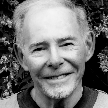FROM THE MARGINS
We humans are part of the vast tapestry of life. Like the rest of our fellow beings we're a bag of water, salts and myriads of organic molecules all organised in a remarkably complex and self-renewing structure. We share nearly 99% of our DNA with chimps, 84% with dogs (maybe specially those involved in social interactions), and 50% with bananas for goodness sake.
Of course, I'm fully aware that this picture conflicts with many versions of traditional religion, but certainly not with all. In fact, from my perspective it makes us and, more broadly, life in general even more miraculous than conceived of in any religion and leaves open-ended the question of ultimate destiny.
But it is not in the context of (or in opposition to) religion that I'm writing this article. Rather by seeing us as another form of animal life it leaves us free to apply the intellectual and material tools that we have developed to study life in general with such remarkable success, to ourselves in particular. Of course we've been doing that for some time already when it comes to our physical functioning: our biochemistry, our physiology and anatomy and the many diseases we're heir to.
Nevertheless, we've been slower to do that when it comes to our emotions and behaviour, whether individual or collective. But many of our basic emotions, from anger, fear, lust, affection and jealousy, are part of the repertoire of most mammals and even older forms of life. And, increasingly, pioneered by such scientists as Frans de Waal and Jane Goodall, we have become aware that even our social dynamics and social emotions are prefigured in many animal species.
So how come we see ourselves and others of our species as different and special, subject to higher standards of behaviour? How come we write poetry to our loved ones yet are capable of killing off entire populations of fellow human-animals? How is it that we, and only we, are able to send images of ourselves and our friends around the world with the press of a button?
These are complicated questions and there are various conceptual prisms we can, and will, use to answer them. But it may be useful to remind ourselves that this story, the human-animal story (henceforth simply the 'human story'), started more than 6 million years ago (mya) with some apes in Central-East Africa, probably living at the forest-savannah interface, who were the last common ancestor (LCA) shared by humans with chimpanzees and bonobos.
There was no blast of celestial trumpets, as far as we know, which signalled the moment our LCA split from the rest of the primates to carve out a distinctive human trajectory or, as we will see, trajectories. All our remote ancestors did was to spend rather more time on the ground than up in the trees, and that made all the difference.
The current best story seems to be this: to cope with the challenges and possibilities of their new home two important adaptations were adopted by the more successful groups of terrestrial apes. Firstly, they spent more time erect scanning their surroundings for food and danger and, secondly, they cooperated more than their tree-living brothers and sisters. In the beginning these were simply behavioural adaptations to their new surroundings. But, not unexpectedly, some of our common ancestors were better at these novel forms of behaviour than others and, lo, their seed prospered and these proto-humans had taken the first small step towards...us.
The following steps were also small and tentative but the cumulative effects were, as we now know, enormous. Essentially, our remote ancestors had embarked on the long and tortuous journey to becoming a largely culturally defined rather than genetically-based species.
The basic idea is this: culture, and by this I mean 'behavioural repertoire and preferences, skills and material products (eg tools)', can change and disseminate much more rapidly than genetic adaptations in multi-cellular organisms. The capacity for rapid cultural adaptation conferred immense survival advantage to those groups which showed a talent for learning from and cooperating with others from within their communities.
Gradually, step by step in an auto-catalytic sequence, the cumulative cultural adaptations selected for those genetic variants which (directly and indirectly) increased cooperativity, high-fidelity learning and the transmission of skills, norms and behavioural repertoires between generations. This dynamic created a new reality in which the socio-cultural niches created by hominins became an important component (ultimately the most important factor) of the gene selection landscape.
In short, those individuals best capable of cooperation and demonstrating the intellectual-emotional-physical abilities to learn and communicate flourished at the expense of other less gifted individuals. And groups which managed to best harness these abilities in response to environmental challenges and, especially, to conflict with others of their species also flourished.
Thus a multi-level, dual cultural-genetic selection process drove the numerous physical, emotional and intellectual genetic features which distinguish the human line from its closest relatives, still trapped within the limits of a largely gene-based universe.
We will be taking up many strands of this story, expanding on them, questioning their explanatory power and trying to relate them to the challenges and predicaments of the present. Like all evolutionary processes it was pretty ruthless accompanied by considerable pain, premature death and fear. The outcome is a remarkably adaptable creature ourselves, but one which carries all the design compromises and flaws created by the rough and ready processes of evolution.
So perhaps we should be astonished and grateful that we humans live in a universe in which we are free "to sweat and whine about our condition" in the words of Walt Whitman - and possibly to change it for the better. It seems a more interesting question than what new trick does Madam Patricia de Lille have up her sleeve.
Mike Berger

